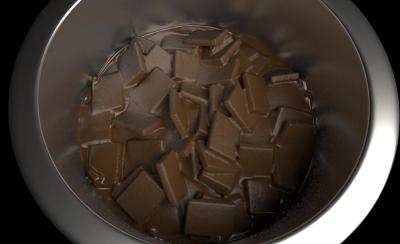| On this page |
Overview ¶
This tool turns a geometry object into a particle fluid with a temperature attribute that affects the viscosity of the object. You would typically want to use this tool whenever you have an object that will change state over time. For example, you could use this tool to create a warm chocolate bunny that would slump over and then cool off and become solid.
Tip
You will often want to use this tool in conjunction with the Heat Within Object shelf tool, which would allow you to have an object that melts when it comes in contact with the temperature generated from another object.
Note
The difference between this tool and Lava From Object is that this tool doesn’t apply any shader. The
Lava From Object assigns a shader to get a basic glowing lava look.
Using Melt Object ¶
-
Create a geometry object to be converted into a melting object.
-
Click the
Melt Object tool on the Viscous Fluids tab.
For specific parameter information, see the
FLIP Object and
Gas Temperature Update help pages.

Tips ¶
| To... | Do this |
|---|---|
|
Change how quickly the objects starts to melt |
Modify the Temperature parameter on the Physical tab of the |
|
Change the look of the fluid |
Adjust the Minimum/Maximum Viscosity parameters on the |
|
Control how quickly a hot temperature will cool off |
Modify the Outer/Inner Cooling Rate parameters on the |